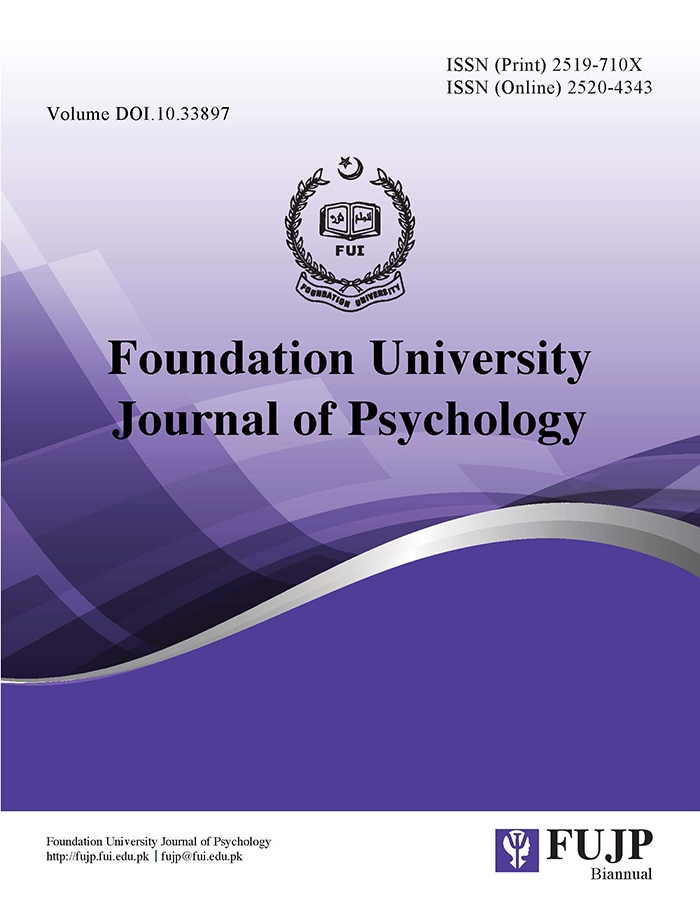Religious Orientation and Optimism: A Quantitative consideration within Pakistani Context
DOI:
https://doi.org/10.33897/fujp.v2i1.39Keywords:
Religious orientation, life orientation, optimismAbstract
The present study aimed to explore Religious Orientation and Optimism in Pakistani religious groups particularly focusing on Muslims and Christians. The instruments used in the current study were Life Orientation Test (LOT) (Scheier& Carver, 1985, translated by Ayub, 2003) and Age Universal Revised Religious Orientation Scale (Gorsuch & McPherson, 1989, translated by Ghous, 2004).The study comprised of (N = 231) individuals. The basic objective of the study was to explore the relationship between Religious Orientation and Optimism among Muslim (n = 118) and Christian (n = 113) adults in. Overall sample incorporated 145 women and 86 men. Their age ranged from 18 - 50 years (M = 39, S.D = .57). Pearson Product Moment Correlation was computed that showed a significant positive correlation with Life Orientation Test in overall sample. Separate relationships were also studied in the Muslim and Christian sample, as well as the overall sample. Religious Orientation holds a significant positive relationship with Life Orientation Test among the Christian sample. It was obvious from the findings that Christian individuals showed more optimistic attitude as compared to Muslim individuals. Furthermore, several other demographic variables (for e.g., gender, age) were also considered. This research addressed the incorporation of religion and optimism for the prosperity of citizens. The findings are discussed in the light of relevant literature.


.jpg)

